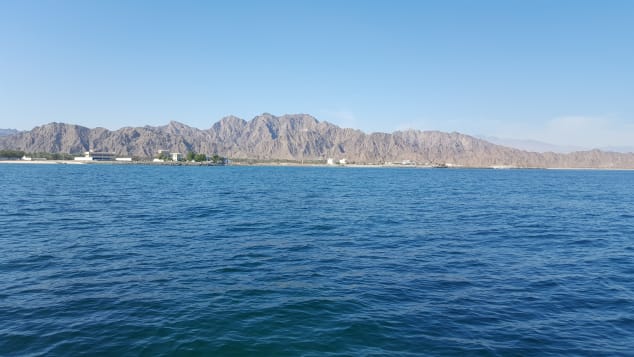How edible oysters are thriving in the warm waters of the UAE
Originally published by CNN Travel
CNN visited Dibba Bay as part of CNN Travel to report on our operation as the first oyster farm in the Middle East.
Before the UAE struck it rich with oil, the region had a different source of wealth -- pearl oysters.
The naturally occurring treasures once formed the backbone of its economy, but their significance dwindled by the early 1900s as a result of Japanese techniques for cultivating immaculate pearls.
Now a new type of oyster is flourishing in the Persian Gulf -- the edible kind. And they could soon help the United Arab Emirates reduce its need to import up to 85% of its food, including European oysters.
It's all down to the work of Ramie Murray. Originally from Scotland, Murray grew up in Dubai, where he discovered a passion for aquafarming that led him initially to lobster farming and then to oysters.
Though largely considered a cold water delicacy, oysters actually thrive in the balmy waters of the UAE.
In northern European countries, where oysters are traditionally farmed, it takes three to four years to grow an oyster to market size.
However, in the warm waters off the coast of Fujairah, an emirate just two hours north east of Dubai, it only takes around eight to 12 months.
It's here that Murray established the country's first oyster farm, Dibba Bay Oysters, in 2016, producing popular Pacific cupped oysters.
Explosion of life

The pristine and warm waters off Dibba Bay provide the perfect environment for oysters to flourish.
Native to Japan, the Pacific cupped oyster is the most adaptable of its kind, dominating the farmed oysters' market around the world.
"They are filter feeders," says Murray. "They very much take on the characteristics of the local environment."
Oysters generally require a lot of food and very clean water to survive.
Since Dibba Bay is situated in open water along the Indian Ocean, it consistently receives clean currents and is the only farm along the coastline, meaning oysters don't have to compete for food.
The water here is nutrient-rich, with high levels of calcium and algae, giving the oysters' outer shell a whiter color than European oysters and a 30% higher meat content inside.
Along with chemical composition, they benefit tremendously from the climate.
While Pacific cupped oysters grow rapidly in the summer months, they essentially go into hibernation as soon as the winter kicks in.
The UAE's endless summer allows for them to be harvested all year-round.
"Because of the temperature of the water, the oysters grow five to 10 times faster than they do anywhere else in the world," Murray explains. "But everything else does, as well. So it's kind of an explosion of life out there."
The farm currently produces between 25,000 to 30,000 oysters per month, delivering to various restaurants across the UAE.
Full article featured here.

